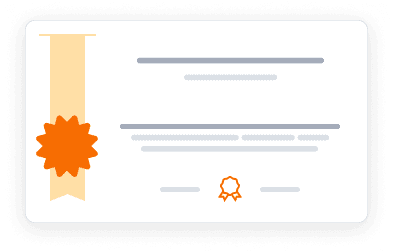Explore comprehensive methods and advanced tools for evaluating wind energy potential and optimizing renewable power development projects.
Explore comprehensive methods and advanced tools for evaluating wind energy potential and optimizing renewable power development projects.
Dive into the world of wind energy with this comprehensive course on wind resource assessment. Learn the fundamentals of atmospheric and fluid dynamics to quantify wind resources for local and regional areas. Explore basic meteorology, turbulent boundary layer dynamics, and standard techniques for estimating wind resources. Understand turbine characteristics and their impact on electricity production for both isolated turbines and wind farms. Gain hands-on experience with real in-situ data sets and apply your knowledge to practical wind resource assessment projects. This course bridges the gap between theoretical concepts and practical applications in the renewable energy sector.
3.6
(126 ratings)
16,258 already enrolled
Instructors:
English
21 languages available
What you'll learn
Understand fundamental concepts of energy units and conversions in the context of wind power
Analyze atmospheric layers and general circulation patterns affecting wind resources
Apply boundary layer dynamics to wind resource assessment
Evaluate wind turbine performance characteristics and efficiency
Conduct wind resource assessments using statistical methods and data analysis
Develop practical skills in analyzing real wind data for energy production estimates
Skills you'll gain
This course includes:
4.35 Hours PreRecorded video
17 assignments
Access on Mobile, Tablet, Desktop
FullTime access
Shareable certificate
Closed caption
Get a Completion Certificate
Share your certificate with prospective employers and your professional network on LinkedIn.
Created by
Provided by

Top companies offer this course to their employees
Top companies provide this course to enhance their employees' skills, ensuring they excel in handling complex projects and drive organizational success.





There are 6 modules in this course
This course provides a comprehensive introduction to wind resource assessment for renewable energy applications. Students will gain a deep understanding of atmospheric and fluid dynamics essential for quantifying wind resources. The curriculum covers basic meteorology, turbulent boundary layer dynamics, and standard techniques for estimating wind resources. Learners will explore turbine characteristics and their impact on electricity production for both isolated turbines and wind farms. The course emphasizes practical skills, including hands-on experience with real in-situ data sets and applied projects in wind resource assessment. Through a combination of theoretical lectures and data analysis exercises, participants will develop the expertise needed to evaluate and optimize wind energy potential in various geographical contexts.
BASICS ON ENERGY
Module 1 · 1 Hours to complete
BASIC METEOROLOGY
Module 2 · 2 Hours to complete
ATMOSPHERIC AND MARINE BOUNDARY LAYERS
Module 3 · 3 Hours to complete
WIND OR MARINE TURBINES
Module 4 · 2 Hours to complete
WIND RESOURCES
Module 5 · 1 Hours to complete
DATA ANALYSIS PROJECT – WIND RESOURCE ASSESSMENT
Module 6 · 6 Hours to complete
Fee Structure
Payment options
Financial Aid
Instructors
Lecturer Professor
A CNRS researcher specializing in atmospheric and oceanic dynamics, Alexandre Stegner has been teaching the issue of wind, hydraulic and marine resources for renewable energies for over ten years.
Expert in Meteorology and Climate Modelling
Philippe Drobinski is a Senior Research Scientist and Professor at École Polytechnique, where he specializes in meteorology and regional climate modeling. As a research director at CNRS, he has coordinated numerous national and international projects focused on Mediterranean meteorology, including the HyMeX program, which investigates the Mediterranean water cycle's impact on water and energy resources. At École Polytechnique, he also leads the TREND-X program, which addresses energy transition issues.Dr. Drobinski has authored or co-authored over 130 book chapters and articles, significantly contributing to the field of climate science. His teaching encompasses courses on meteorology and renewable energy resources at the master's level. His recent research interests include the implications of climate change on energy systems and the development of sustainable resource management strategies. Through his work, Dr. Drobinski aims to enhance understanding of climate variability and promote effective policy responses to environmental challenges.
Testimonials
Testimonials and success stories are a testament to the quality of this program and its impact on your career and learning journey. Be the first to help others make an informed decision by sharing your review of the course.
Frequently asked questions
Below are some of the most commonly asked questions about this course. We aim to provide clear and concise answers to help you better understand the course content, structure, and any other relevant information. If you have any additional questions or if your question is not listed here, please don't hesitate to reach out to our support team for further assistance.





